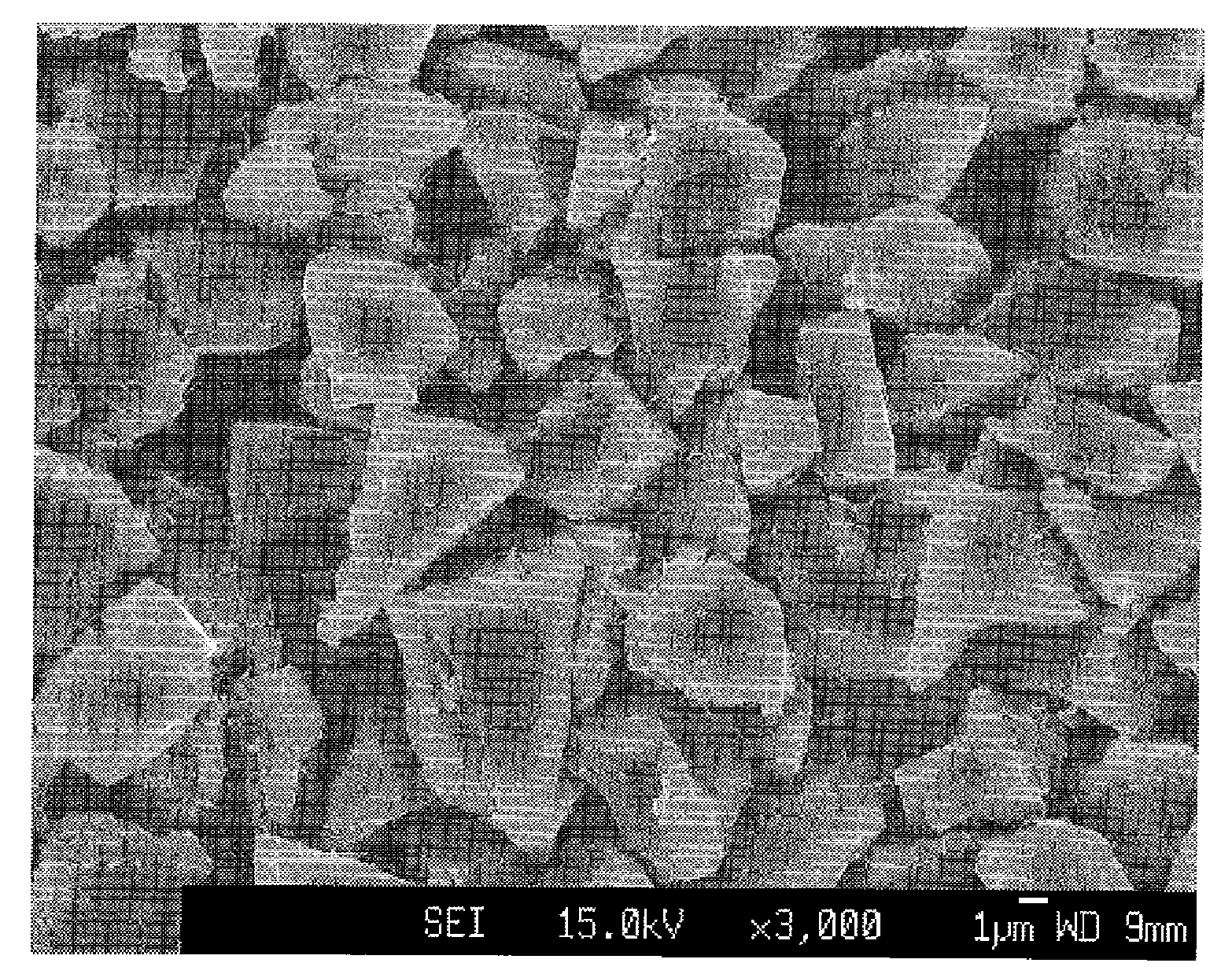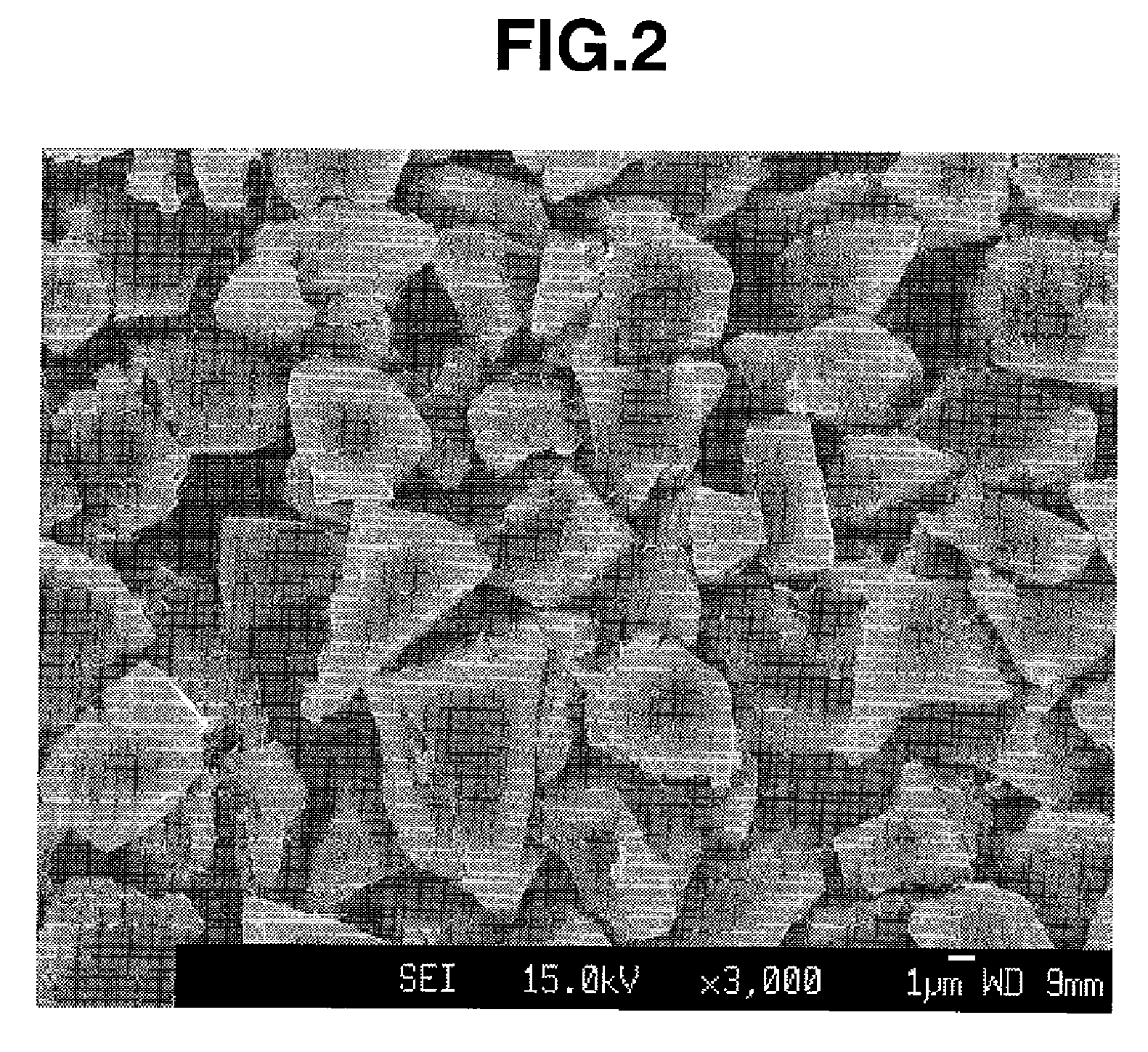Non-aqueous electrolyte secondary battery negative electrode material, making method, lithium ion secondary battery, and electrochemical capacitor
a secondary battery and negative electrode technology, applied in the field of making methods, lithium ion secondary batteries, non-aqueous electrolyte secondary battery negative electrode materials, etc., can solve the problems of insufficient conductivity, insufficient capacity, and insufficient charge/discharge capacity, and achieve simple method of preparing negative electrode materials, high capacity, and improved cycle performance
- Summary
- Abstract
- Description
- Claims
- Application Information
AI Technical Summary
Benefits of technology
Problems solved by technology
Method used
Image
Examples
example 1
[0055]A batchwise heating furnace was charged with 200 g of silicon oxide powder of the general formula SiOx (x=1.02) having an average particle size of 8 μm. The furnace was evacuated to a pressure below 100 Pa by means of an oil sealed rotary vacuum pump while it was heated to 1,150° C. at a ramp of 300° C. / hr and held at the temperature. While CH4 gas was fed at 0.5 NL / min, graphite coating treatment was carried out for 5 hours. A reduced pressure of 2,000 Pa was kept during the treatment. At the end of treatment, the furnace was cooled down, obtaining about 220 g of a black powder. The black powder was a conductive powder having an average particle size of 8.2 μm and a graphite coverage of 12 wt %. The powder was analyzed by microscopic Raman spectroscopy, obtaining a Raman spectrum (FIG. 1) having peaks near 1330 cm−1 and 1580 cm−1 Raman shift, with an intensity ratio I1330 / I1580 being 2.0. When the powder was observed under SEM, whiskers were found throughout the field of view...
PUM
| Property | Measurement | Unit |
|---|---|---|
| temperature | aaaaa | aaaaa |
| pressure | aaaaa | aaaaa |
| particle size | aaaaa | aaaaa |
Abstract
Description
Claims
Application Information
 Login to View More
Login to View More - R&D
- Intellectual Property
- Life Sciences
- Materials
- Tech Scout
- Unparalleled Data Quality
- Higher Quality Content
- 60% Fewer Hallucinations
Browse by: Latest US Patents, China's latest patents, Technical Efficacy Thesaurus, Application Domain, Technology Topic, Popular Technical Reports.
© 2025 PatSnap. All rights reserved.Legal|Privacy policy|Modern Slavery Act Transparency Statement|Sitemap|About US| Contact US: help@patsnap.com



